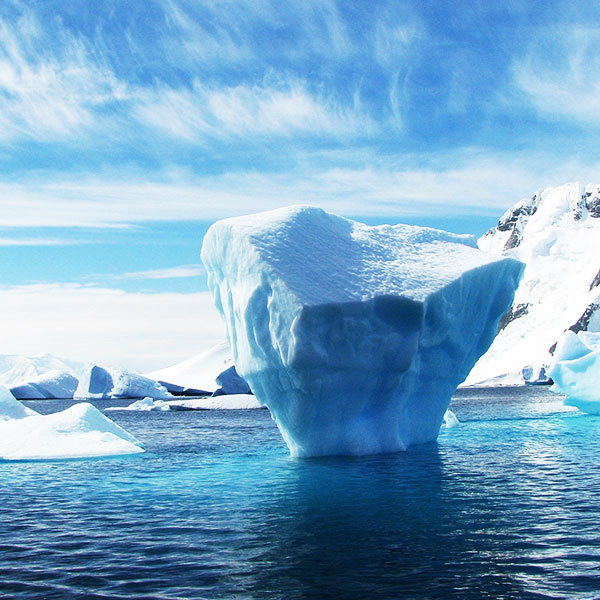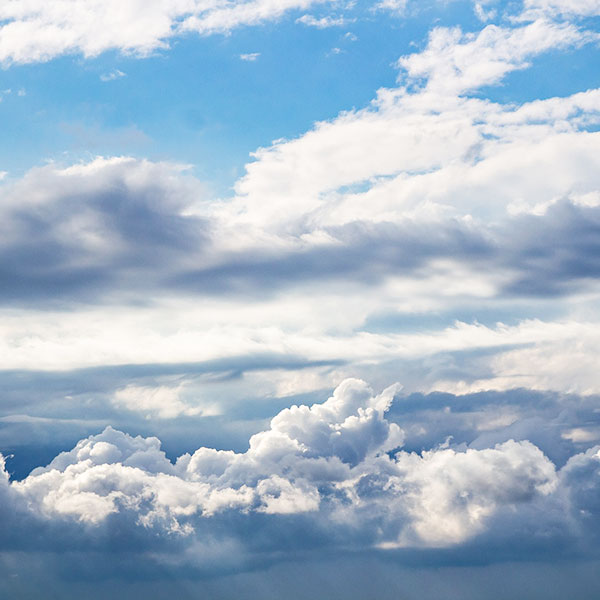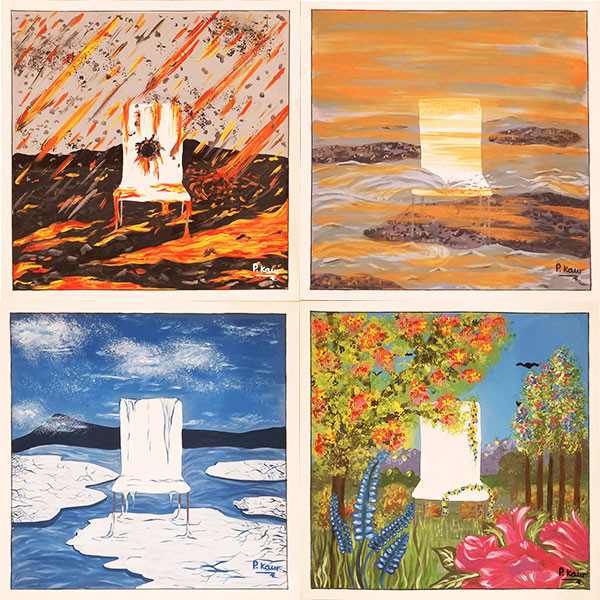Ice ages are common in Earth’s history. They come in different forms, for example there have been ‘Snowball Earth events’ where the entire globe is covered in ice from the poles to the equator, a floating ice ball in space. There are also times where part of the earth is covered in ice but not the whole earth, like today.
If there are enough ‘greenhouse gases’ like carbon dioxide and methane in the atmosphere, it will keep the overall temperature of the planet high enough to keep ice from spreading too far across the planet. These gases trap heat and the levels have gone up and down in the past depending on what else is going on around the globe.
2.9 billion years ago – Pongola glaciation
The potential first glaciation ever on Earth, in the Archean eon (4 billion to 2.5 billion years ago).
2.5 – 2.2 billion years ago – Huronian glaciations
We’re in the Proterozoic eon (2.5 billion years ago to 538 million years ago), the third and longest eon of Earth’s geological time scale. See here for my previous blog on the time scale for more information. Evolution of Earth’s Geological Time Scale
The beginning of this eon is marked by the Huronian glaciations. A period of ice ages that led to ‘Snowball Earth’. It is thought that The Great Oxidation event, evolution of photosynthesising cyanobacteria, rose oxygen levels and changed the balance of the gases in the atmosphere, reducing the previously methane heavy atmosphere and thus reducing the greenhouse effect. There is also a theory that there was a 250 million year period of inactive volcanoes which also meant less greenhouse gasses being pumped into the atmosphere, thus lowering the global temperature enough to cause a global freeze.
720 – 635 million years ago – Snowball Earth
We are still in the Proterozoic eon (2.5 billion years ago to 538 million years ago) now towards the end in the Neoproterozoic era (1 billion to 538 million years ago), before our current eon and the Cambrian explosion around 535 million years ago. This era of time is divided further into three ‘periods’ of time, the second of these is the Cryogenian (720 – 635 million years ago), so named from Ancient Greek meaning ‘cold’.
Snowball Earth occurred in the Sturtian glaciation 717 million years ago for around 57 million years, a global freeze where the earth is covered in ice from the poles to the equator. Then another global freeze or slush freeze known as Marinoan, began around 654 million years ago and lasted for maybe 20 million years. These events are thought to be because of the breaking up of the supercontinent Rodinia. See here for my blog on the evolution of supercontinents. The Evolution of Supercontinents
There were a couple more periods of glaciation after these two, the Gaskiers and Baykonur which occurred right at the end of the Proterozoic eon, just before the Cambrian explosion of 535 million years ago.
460 – 420 million years – Andean-Saharan glaciation
We are now in the current eon of geological time, Phanerozoic, where life is booming from the Cambrian times. This glaciation is thought to be the leading cause of the first of the big five mass extinctions which happened around 445 million years ago. The cause of this is highly debated. The co2 levels could have dropped because of increased plant activity, reduction in volcanic activity, the inorganic carbon cycle which sucks co2 out of the atmosphere, a gamma-ray burst, asteroid impacts and even a few other causes. The list is so long because it isn’t entirely certain what caused it.
360 to 255 million years ago – Late Paleozoic Ice Age, or Karoo ice age
This is thought to have been caused by the increase in land plants, which would have changed the oxygen and co2 levels in the atmosphere. Another potential cause is the position and shifts in continents.
Late Cenozoic Ice Age – the current ones
During the Miocene epoch (23 million years ago to 5.2 million years ago), the earth has begun to cool. This means reduced ocean evaporation causing less rain and drier climates, forest shrank and deserts spread. The continents have been rearranging themselves to eventually cause the block of warm water reaching the poles.
Around 6 million years ago, the Mediterranean became a semi-enclosed inland sea, locking up 6% of the salt in the ocean. With this lower concentration elsewhere, oceans froze more easily. The cooling trend accelerated in the Pliocene epoch (5.2 million years ago to 1.6 million years ago). This is when our ancestors evolved.
3.5 to 2.5 million years ago to today
This is when the ice ages began with ice sheets forming in the northern hemisphere. This can be measured by looking at oxygen isotopes. These aren’t global freezes like the snowball earth from earlier, but ice sheets and glaciers would cover much of the northern hemisphere, up to the point of most of North America.
The ice age cycle lengths have varied in time over the last 2 million years. The ice age cycles have a cold spell and warm interglacial periods. First the cycles were around 40,000 years, then increasing to 70,000 years and now it is 100,000 years. The last ice age began around 100,000 years ago, the peak of which was around 20,000 years ago. There was a brief cold spell around 13,000 years ago called the ‘younger dryas’ for around 1500 years. The warmer climate of the last 10,000 years or so is the warm interglacial period in the middle of the cold spells. Technically the earth should be going back to a cooling period, however we have shifted the balance of greenhouse gases in the atmosphere leading to global warming rather than cooling.
We have survived through at least two ice ages, as sapiens evolved around 250,000 – 300,000 years ago. Will we survive through the global warming period that we have created?





